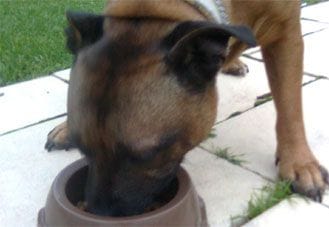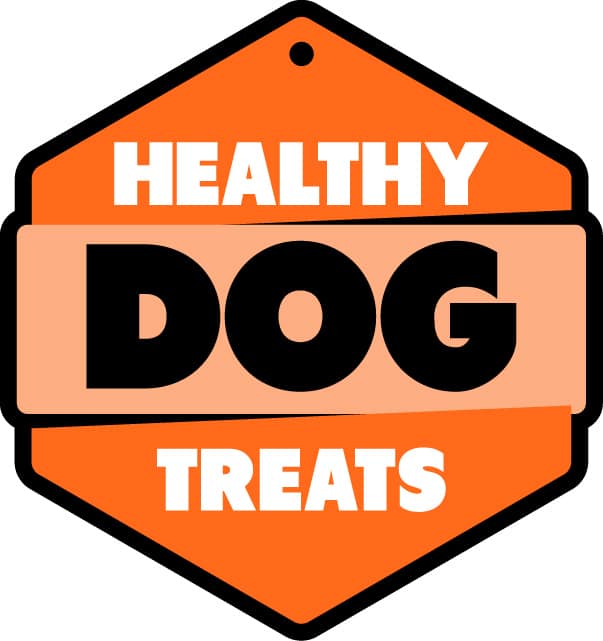A dog food rolls review claims high quality pet food and is not manufactured but purely meat

T
If you don’t feed your dog raw meat as its major food, then for health, you should be at least giving them high quality meat dog treats.
In a previous article on this site, I mentioned the many reasons why a raw diet (raw meat, raw bones, some offal) all in the correct ratios, with as much variety in the breed of meat, is the ONLY way to feed a dog properly. That usually falls on deaf ears, because of assumed costs, effort etc, but mostly I think it is still about the 50 years of large corporations muddying our understanding through great ads, about what is healthy for your dog.
In particularly I could not let a recent written “review” (read the ad with affiliate links) go without critiquing its obvious lies. Even on the radio lately, I have been hearing about how you ought to feed your dog this ‘dog food roll’ because a vet put his photo on it? Seriously, a dog food roll is better than what a dog would eat in the wild?
This is a great elaborate snow job that the advertising industry has been pushing for the last two generations of people, and it’s been so effective that people now believe it to be true, without question. There has been a 100% turn around in people getting dog food from the butcher to buying wheat and rice and water in cans and pellets from a supermarket – much nicer packaging!
YES, many dogs seem to lap up pellets and with all their cheap wheaty goodness, but that is probably because of all the enticing additives added, and because you raised them on it, not because it is healthy or natural for your dog. Do you seriously consider that a lab and a factory somewhere out in the suburbs that uses cheap grains, then whacking a fancy label on it is best for your dog? A few added colours here, and sweeteners, and your dog will be fooled into loving it, just as a child loves candy. But is it really good for your dog? Hell no!
What the fake dog food rolls review said
The article started off sane enough, saying how a few years back they trialed a six different “top dog foods” (manufactured dog foods) and they fed each one of these to their dogs for at least ten weeks, and they found the winner. Of course, they may as well have fed the dogs six brands of chocolate biscuits for all the science that went behind this ‘trial’ and the supposed winner (that they happen to be advertising on their site). Like the three bears, she complained that they had the following problems:
DOG FOOD PROBLEM 1 This “one had too many molasses.”
I found it interesting that any molasses or sugars need to be added to entice a dog to eat it. Most healthy dog sites, based on science suggest added sugar in any form causes dog cancers.
People have been programmed to think that the addition of rice, pasta or raw wheat is healthy for a dog, but it is not, because dogs are not omnivores, they are carnivores, as defined by science texts. Dogs don’t get their energy from carbohydrates (sugars found in plants) they get energy from breaking down the proteins and fats found in animals. So yes, she was actually right in a vague way.
DOG FOOD PROBLEM 2 – “too grain dense”
She also complained that the dog food apparently provided a ‘lot of nutrition in a tiny quantity of food’ not giving them enough bulk.
To the unaware, dogs only need a little bit of meat, because meat has a lot of protein. They don’t need bulk to feel satisfied like humans do. In fact, they don’t need grain at all. If anyone can recall seeing a wild dog roam a farmer’s field and eat the raw grain from his crop, congratulations, you have found the first seriously ill mutant dog. Dogs just don’t intentionally eat grains in the wild, nor should they have to in your kitchen. The massive stools that pellet fed dogs make are a testament to how much of the manufactured dog food, they don’t actually use.
DOG FOOD PROBLEM 3 – “too much variance in look and smell”
Wow, isn’t that something to think about for a while. Surely this person is correct if they are talking about hamburger from a chain store, that is filled with as much cheap artificial goodness as the manufacturer is allowed to pack in, but this requirement for sameness is a very human thing.
We hate spots on our apples, and we hate eating a burger that doesn’t look exactly like the one advertised on TV, or the other 200 that we ate over the last five years. But nature doesn’t provide food that looks exactly the same from different farms in different climates etc.
But here is the big shock news, Real meat varies in look and texture etc, from one animal to another, even within the same species from the same farm! It’s called nature and if all my dog treats looked exactly the same, then I would cry foul play! The reason is that there would obviously be too much artificial intervention trying to make it all look the same. For instance one bag of kangaroo jerky dog treats often looks radically different in colour and meat pieces sizes from the next, because it was made from different kangaroos, from different areas. Variation in the look of natural food is actually a good thing.
DOG FOOD PROBLEM 4 – the winner was still a manufactured dog food
The author unabashedly named the winning “dog food” company and bragged about her dogs glossy dog coats, and that they “seem content”. If you have read my other articles about how the AAFCO chooses its committee members (many have direct links to dog food manufacturing companies) and how lax its standards are (2 out of 8 dogs can fail and out of the remaining six they can lose up to 15% of their body weight over the six week food trial), then you will know that to be classed as a dog food, a license to print money, not about providing healthy natural dog food.
There is no way that simply tossing a few vitamins in trial and error derived combinations can match what nature has naturally provided dogs in their natural diet – meat.
DOG FOOD PROBLEM 5 – “my dogs eat XXXX Beef and Rice or XXXX Lamb and Rice Performance Formula.”
There are so many things that are wrong with this statement that my head spins. I will take each phrase as they come. Let’s start with “Beef and Rice” OR “Lamb and Rice” phrases. Each one of these phrases conjures up a tasty meal to us humans, but with much of the Beef or lamb being replaced with TVP’s (soybean extract), or the order of ingredients on the can being such that the second to fifth ingredients are grain based, and combined constitute 80-90% of the pellet there is hardly any reason why they should be allowed to put the meat words first.
You are also very likely to NEVER find out what part of the animal ended up in the pellet, but I can tell you that it is going to be the least expensive waste product left on the abattoir floor. All corporations (as opposed to family businesses) have shareholders and are very cost driven, very few are quality driven.
Why is Rice included in the food at all? When did carnivore dogs become rice or grain-eaters – except when we put it in pellets and forced them to eat this cheap filler? Is it crushed green wholegrain rice that they might accidentally find in a prey’s stomach (which makes very little difference to a carnivore anyway) or cheap over-processed white rice?
And lastly the ubiquitous “Performance Formula” claim. How is it that ‘humans’ have been able to significantly improve on raw meat, the only thing dogs should eat, with a man made “performance formula”. Meat is the only performance animal that wolves and wild dogs chase down. They don’t need to follow a formula while eating it, because it is their natural diet.
DOG FOOD PROBLEM 6 “ The great thing about XXXX is that … the formula is for every stage of life from puppy to senior”.
This statement makes you wonder how wolves and wild dog packs ever survived in the wild?
You see, in the wild the adult dogs chew up and regurgitated MEAT for their puppies. As the puppies grew older, are able to eat bones, that cleaned their teeth. Bones also provide them with calcium and glucosamine, and high energy marrow. Wild dogs and wolves don’t carefully craft a different diet for every stage of their life, they instinctually know what to eat. They eat what is appropriate to them, because they can choose, they are not force fed artificial food by their owners or food manufacturers.
DOG FOOD PROBLEM 7 “They even have dog food for food allergies .. and weight gain problems.”
Again, how novel. You see there are very few dogs in the wild that have naturally occurring allergies, and NONE have allergies to meat. Allergies that our pet dogs gain are mostly due to chemicals in the environment and poisonous plants. In domestic dogs, overdosing dogs on grains can make them allergic to a whole bunch of food types, and when you permanently stuff up a dogs system, then sometimes they can’t even eat a natural food again such as meat. There are only a handful of dogs that can’t eat a lot of meat, and these are dogs such as Dalmatians that require a low protein diet. Not because they are typical of dogs, but because of bad choices breeders made in refining this breed.
Weight gain problems are a man-made issue, in the wild if you wanted to keep up with the pack and get fed, you wouldn’t be overeating. If you are stuffed full of grains, then like rats that waddle off cargo ships, there is a good chance you will get fat. And like humans, the solution is balancing up the exercise and food equation. There is a very strong chance that most fat dogs are not taken for a long daily off lead run EVERY DAY.
A raw meat food diet is very different from cans and pellets. Typically most dogs should eat between 2-3% of their body weight in raw meat each day. It changes depending on age, breed and exercise level, but it’s easy to adjust either food or exercise.
DOG FOOD PROBLEM 8 – “6 out of 10 of these dogs … eat XXXX dog food.”
Is this some kind of dog food brilliance or corporate marketing accomplishment?
Put enough money into advertising, sell your faux dog food via enough vets, and you will have everyone believing the biggest lie perpetuated in the dog industry, that man-made food can ever compete with MEAT.
Just because these 6 out of 10 show dogs aren’t dead, does not mean that they are on an optimum diet, they are just surviving, with shiny coats, and are most likely sponsored by the food label.
If any of this rebuttal makes sense to you, I suggest that you have a look at other articles about raw meat diets on this site.
Article by Bruce Dwyer. If you wish to use any of this information please refer to the article as a reference and provide a link to click us!


